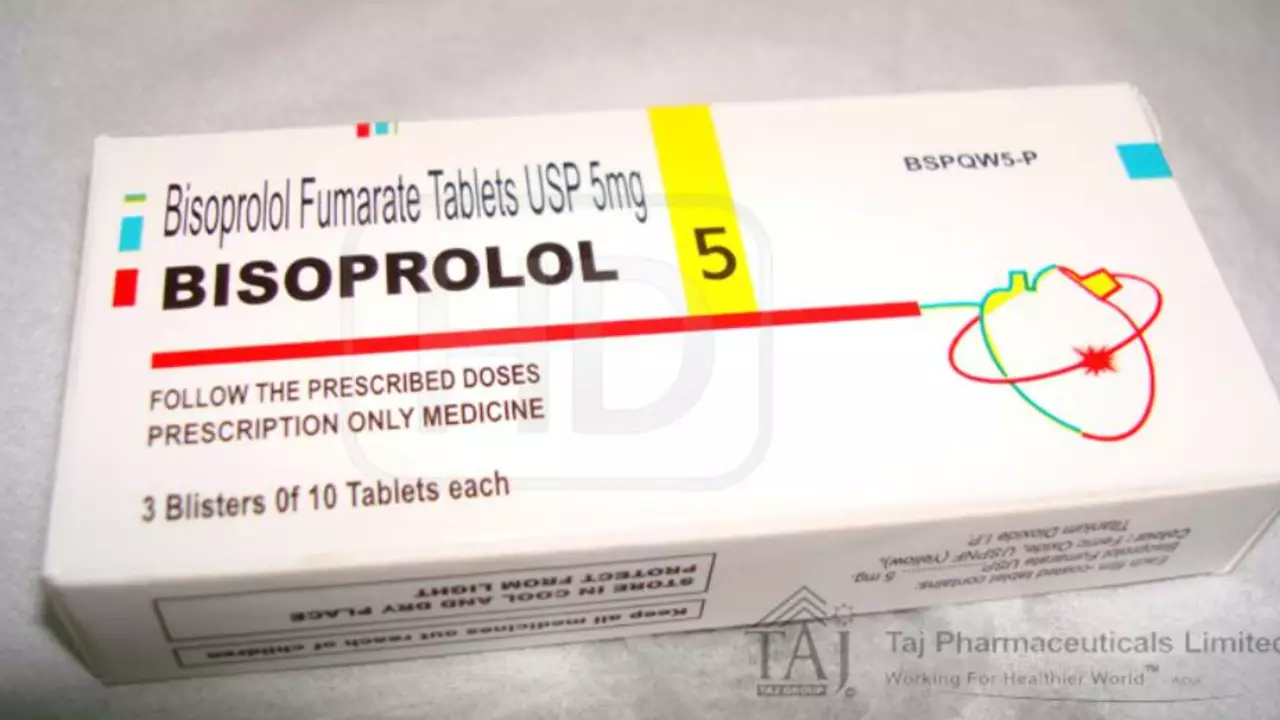Bisoprolol fumarate — what it does and how to use it safely
One small pill can slow your heart and lower blood pressure, but it can also cause trouble if used wrong. Bisoprolol fumarate is a beta-1 selective blocker mostly used for high blood pressure, angina, and heart failure. This page gives clear, practical advice so you know when it helps, what to watch for, and how to take it without surprises.
How bisoprolol works and when it's prescribed
Bisoprolol targets beta-1 receptors in the heart. That cuts heart rate, reduces the force of each beat, and eases the heart’s workload. Doctors commonly prescribe it for hypertension (high blood pressure), stable angina, and as part of heart failure care — it’s one of the beta-blockers proven to lower deaths in heart failure patients (think CIBIS trials). It’s also used after heart attacks in many cases.
Because it prefers beta-1 receptors, bisoprolol usually causes fewer breathing problems than older non-selective beta-blockers. Still, people with asthma or severe COPD need a careful check before starting.
Practical dosing, side effects and safety tips
Typical starting doses: 5 mg once daily for adults with high blood pressure; doctors may start lower (1.25–2.5 mg) for elderly or frail patients, then titrate up. For heart failure the dose often starts very low and increases slowly to a target — commonly up to 10 mg daily depending on tolerance. Always follow your prescriber's plan.
Common side effects: tiredness, dizziness, cold hands or feet, slow heartbeat. Less common but serious: pronounced bradycardia, low blood pressure, worsening heart failure if started during decompensation, and mood or sleep changes. Don’t stop bisoprolol suddenly — taper over 1–2 weeks unless your doctor tells you otherwise. Stopping abruptly can trigger fast heart rate, high blood pressure, or angina.
Watch for interactions: combining with verapamil or diltiazem can dangerously slow the heart. Digoxin adds to bradycardia risk. Insulin and some diabetes drugs can have masked hypoglycemia signs, so check blood sugar carefully. NSAIDs may blunt blood-pressure-lowering effects. Tell your doctor about all meds and supplements.
Monitoring: check pulse and blood pressure regularly, especially after dose changes. Your doctor may order ECG, kidney and liver tests, and blood sugar checks if you have diabetes. If you feel faint, have worsening shortness of breath, or a very slow heart rate, seek medical advice right away.
Practical tips: take the tablet at the same time every day (morning is common), swallow whole, and use a pillbox if you take several meds. If you miss a dose, take it when you remember unless it’s near the next scheduled dose — don’t double up. If you plan pregnancy or are pregnant, discuss alternatives; many doctors avoid starting new beta-blockers in pregnancy unless necessary.
If you want more on brands, dosing schedules, or how bisoprolol compares with other beta-blockers, check our related articles and talk to your healthcare provider for a plan tailored to you.
